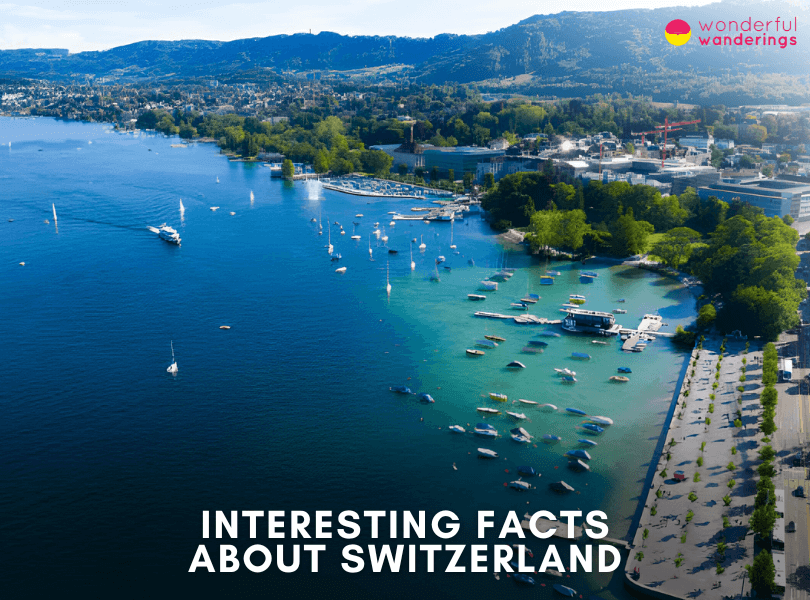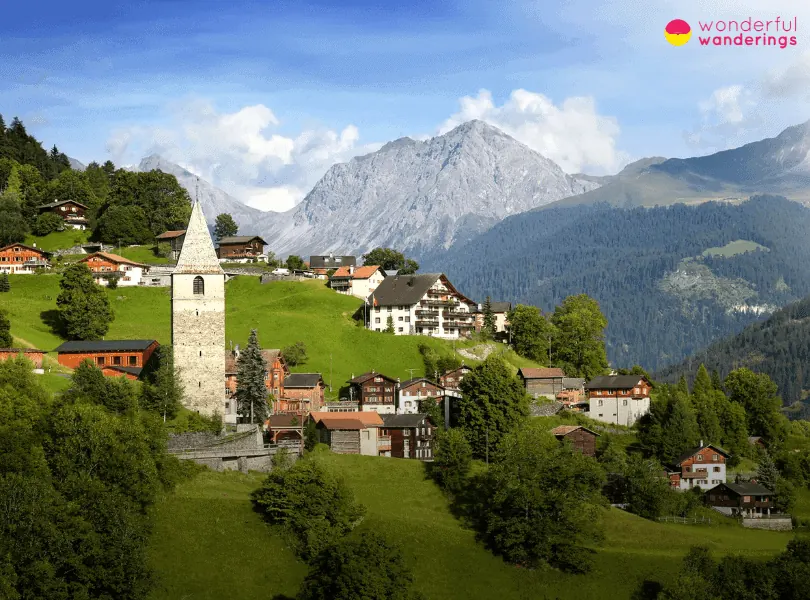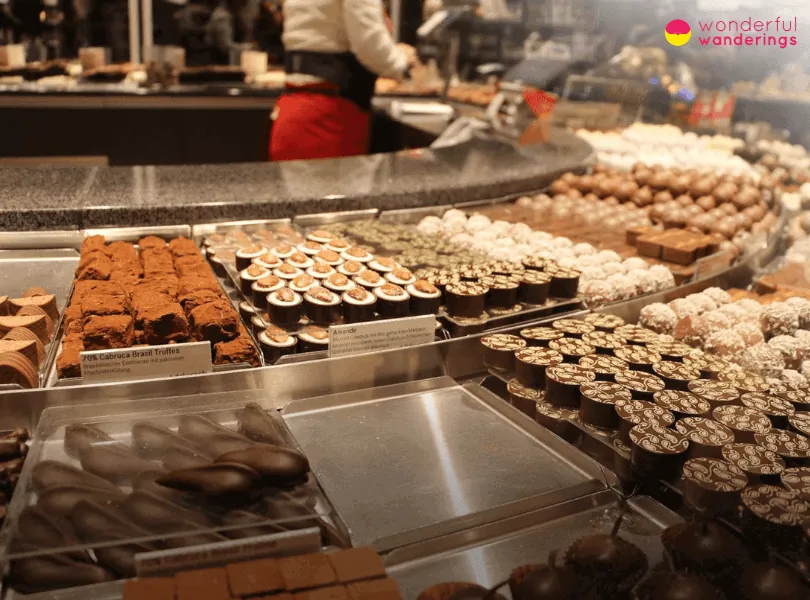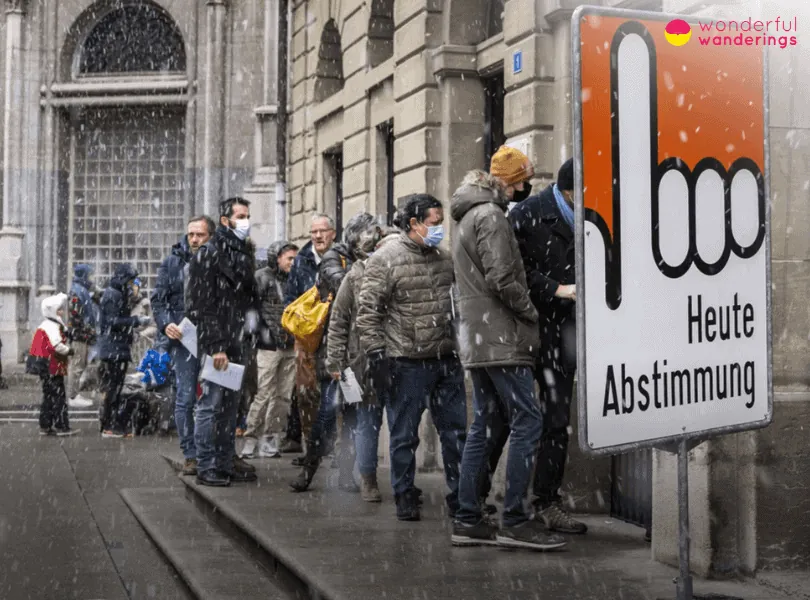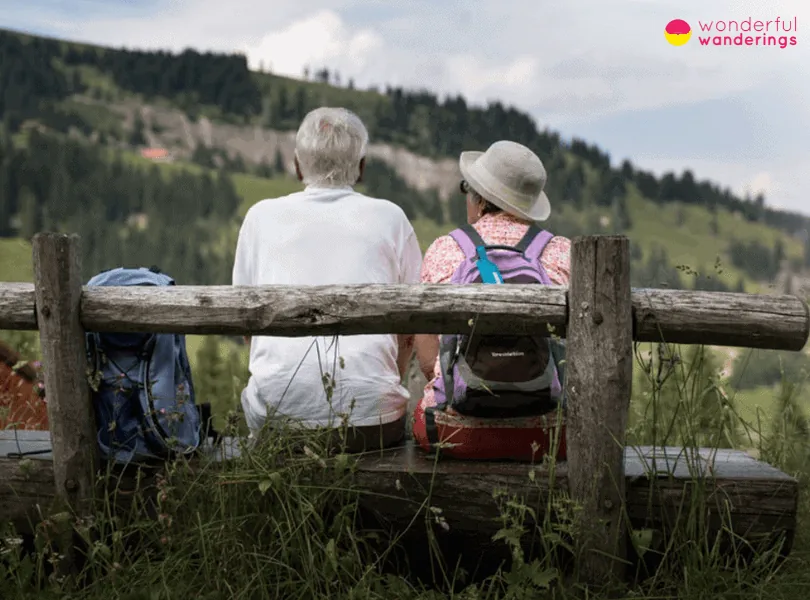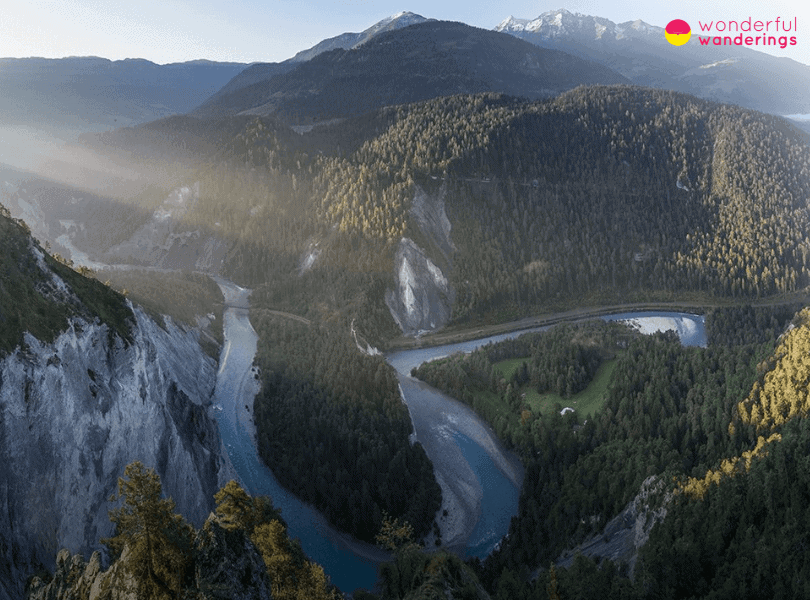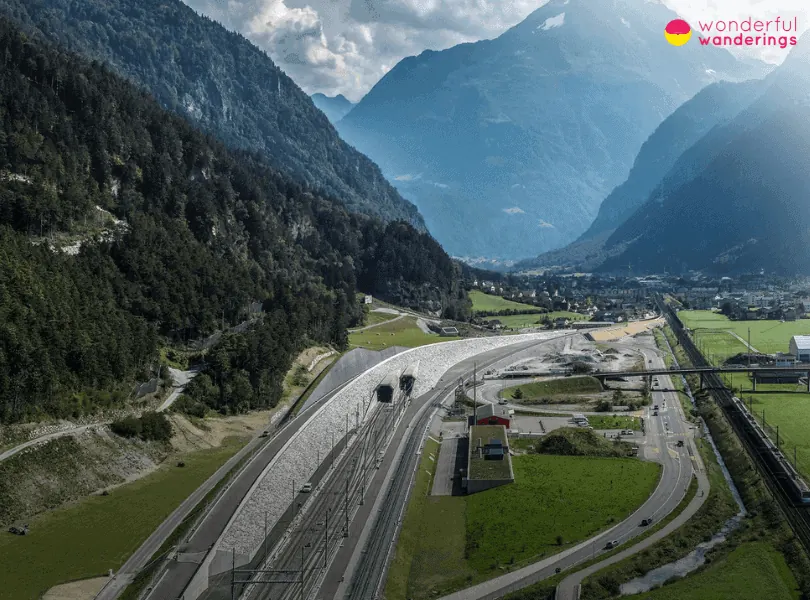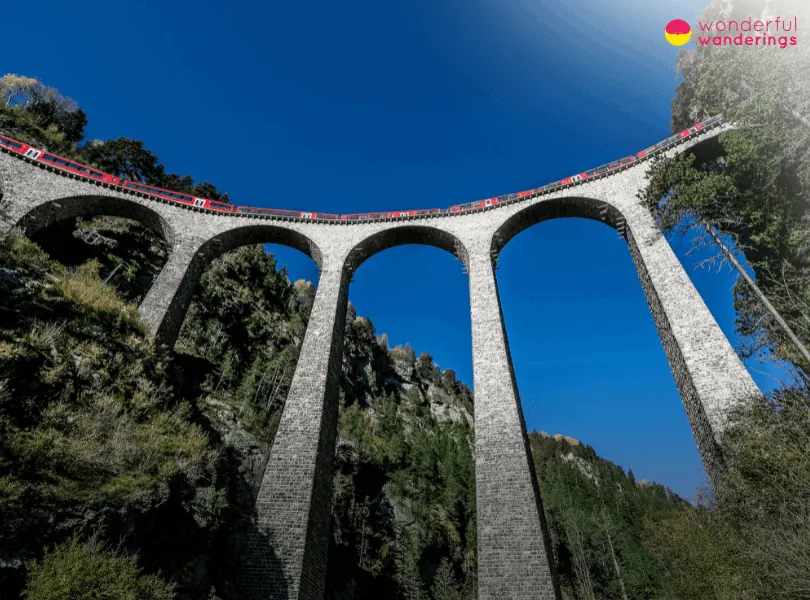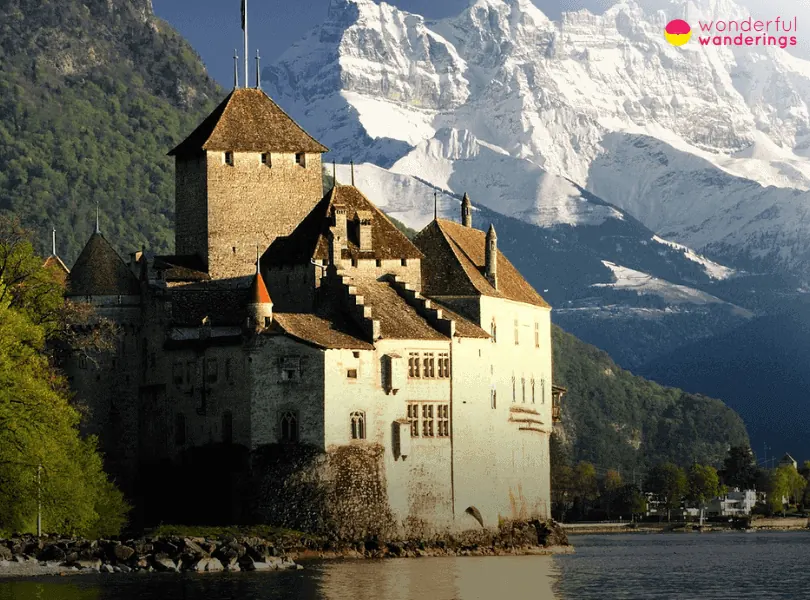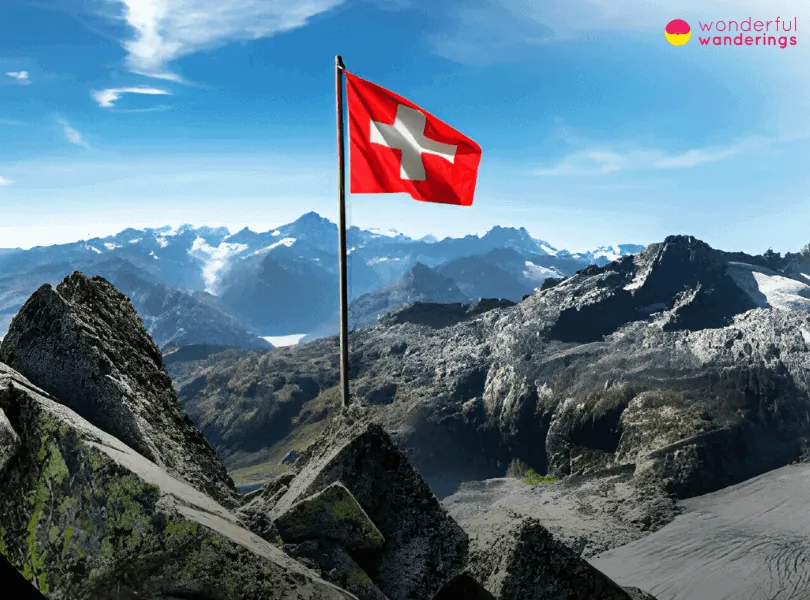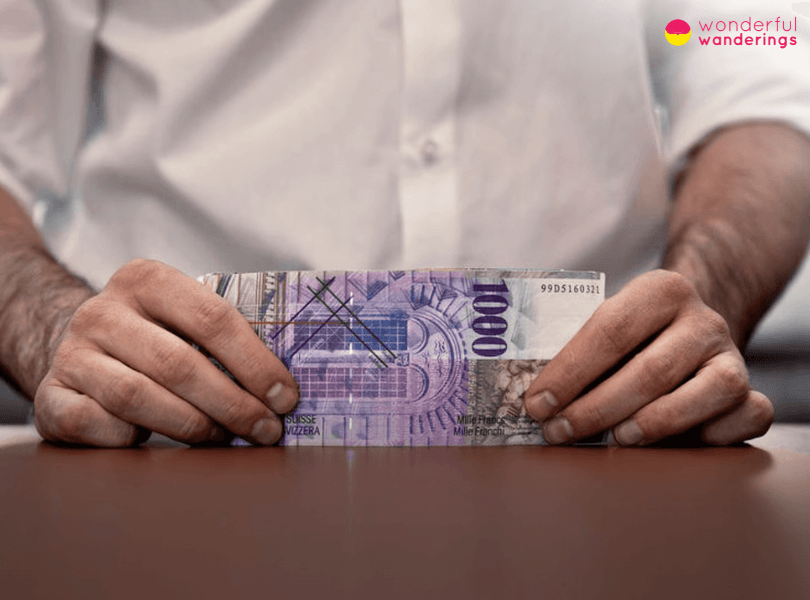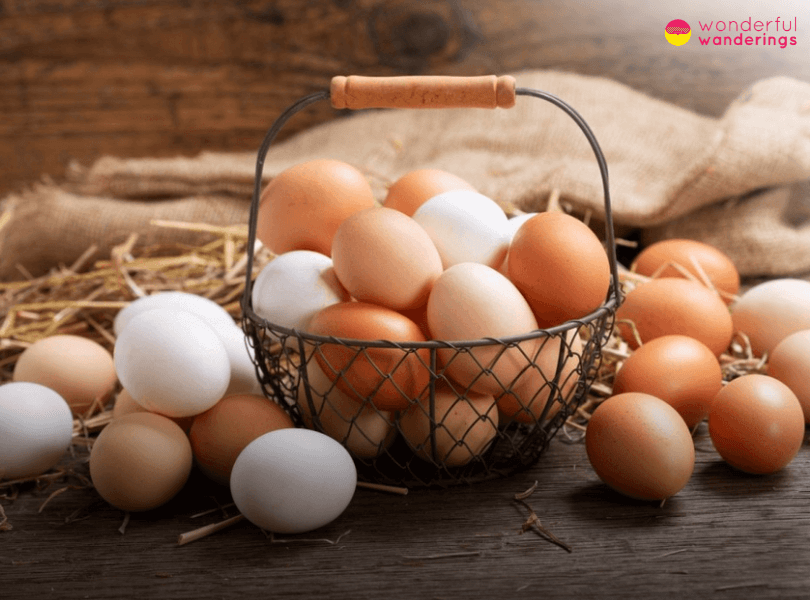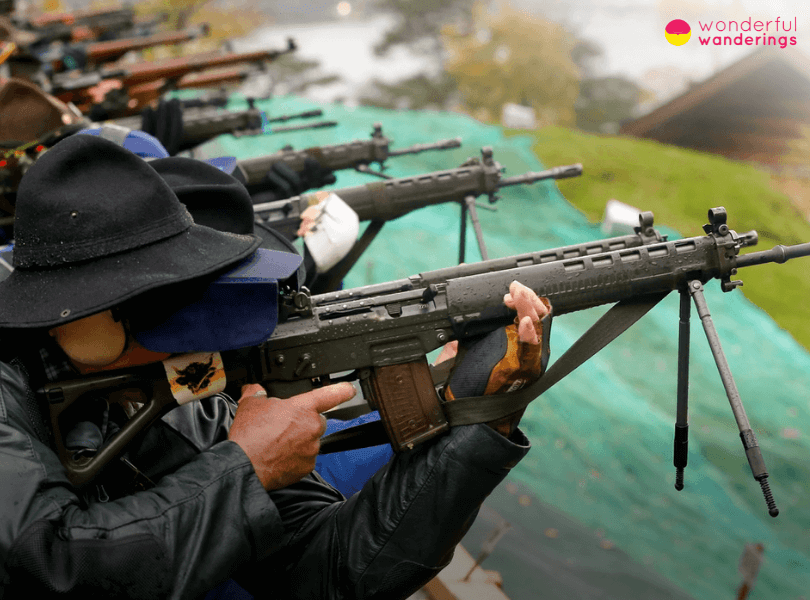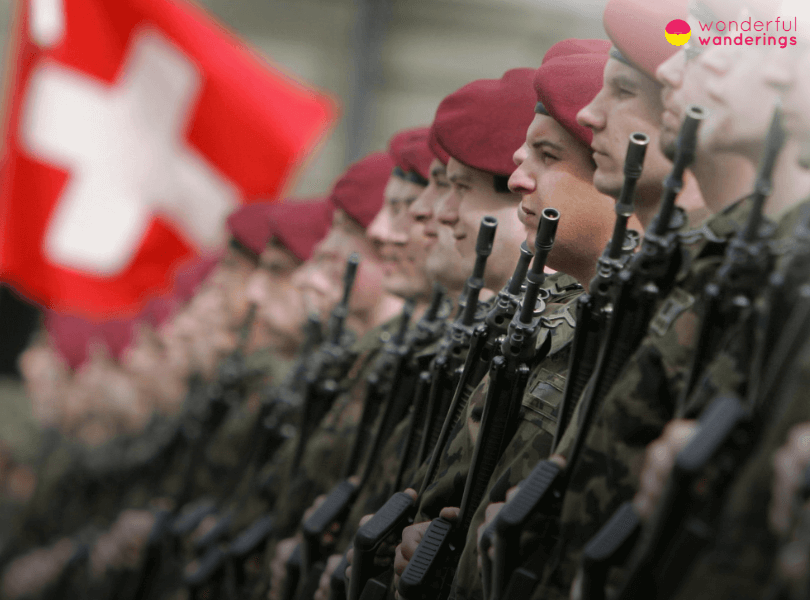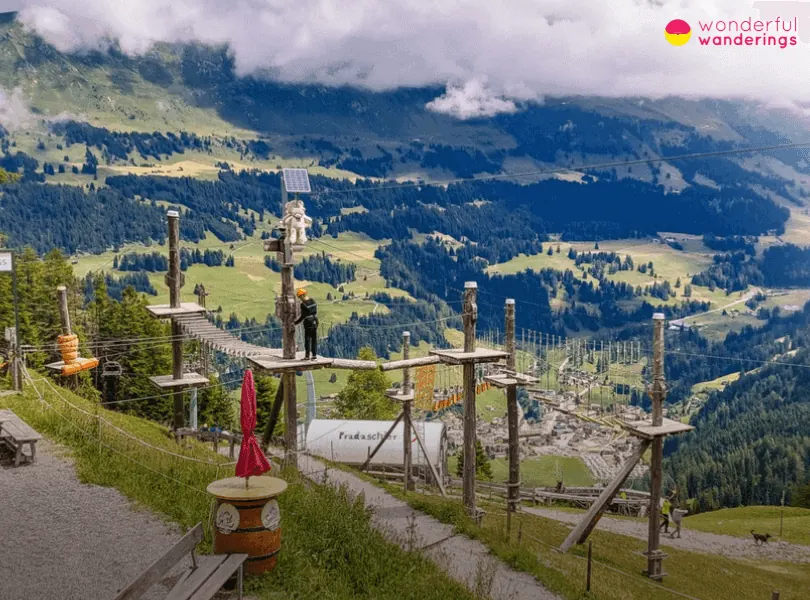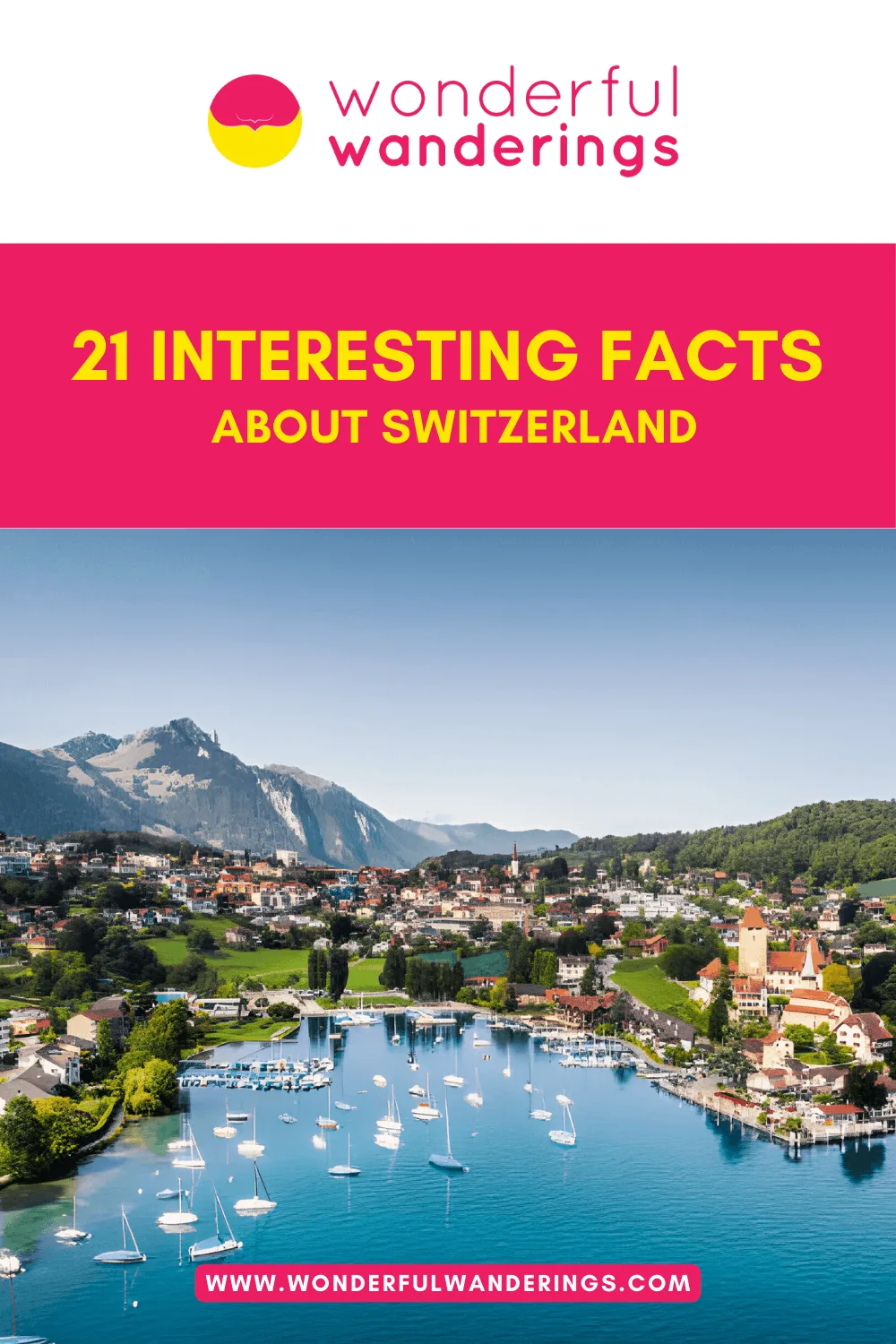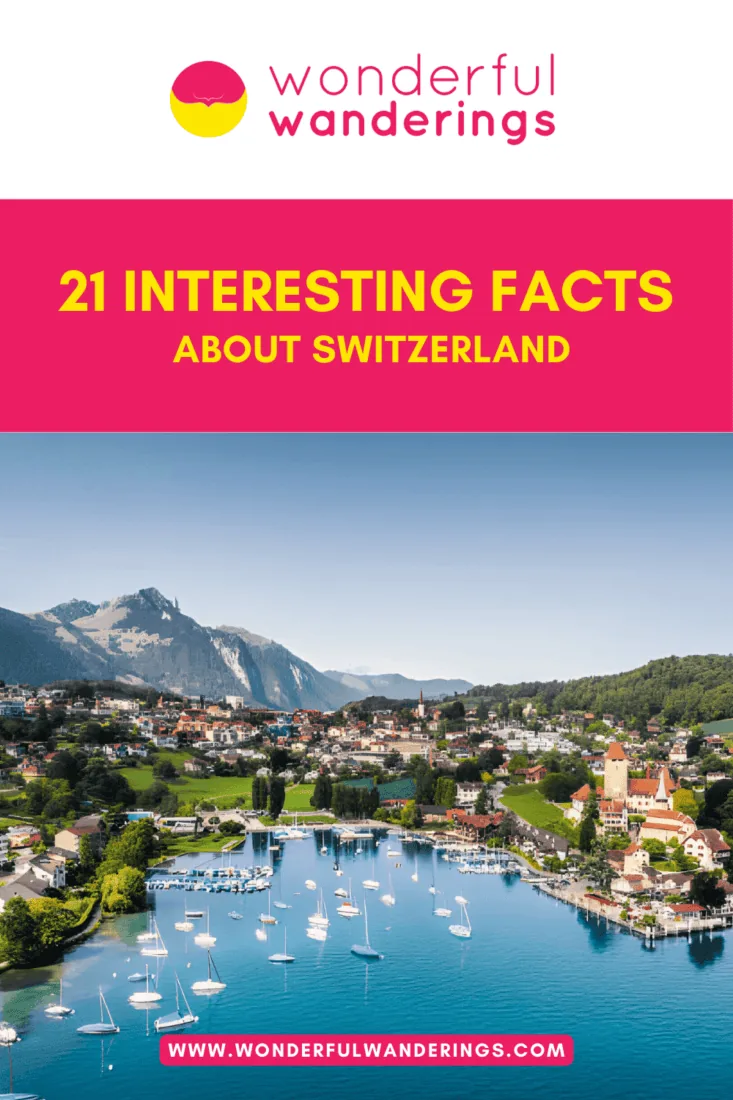Switzerland is a multilingual country with four national languages – German, French, Italian and Romansh. The Alpine mountains cover 65% of Switzerland’s landscape, influencing its culture and economy. Switzerland is completely landlocked within central Europe. It is popular globally for excellence in cheese, chocolate, watchmaking and banking. Switzerland has maintained neutrality in foreign affairs and conflicts for centuries, keeping out of European wars. Switzerland has 13 sites designated as UNESCO World Heritage Sites showcasing its natural beauty and human creative achievements. The abundant freshwater resources across Switzerland’s lakes, rivers and glaciers give it the nickname “Europe’s Water Castle”. Switzerland enforces strict naming laws for babies to prevent inappropriate names. The square shape of the Swiss flag is modeled after the 15th-century military banners of the Swiss Confederacy. Mandatory military service is required for Swiss men conscripted as citizen soldiers. Sundays in Switzerland maintain a traditional role as a peaceful day of rest for family time and relaxation.
Listed below are some interesting facts about Switzerland.
- Switzerland Has Four Official Languages. Switzerland is the only country with four official national languages.
- More Than Half of Switzerland Is Covered by the Swiss Alps. The Swiss Alps are a major European Alps mountain range subsection. The Alps occupy the southern part of Switzerland, covering 65% of the country’s total 41,285 square kilometers (15,940 square miles) of land. The Swiss Alps extend from the Rhône valley near Lake Geneva in the west to the Rhine valley near Liechtenstein in the east. The Swiss Alps have helped shape Swiss history, culture and economy. The Alps provide the Alpine scenery, making Switzerland an extremely popular tourist destination.
- Switzerland Is a Landlocked Country. Switzerland is landlocked, enclosed by land without direct coastal access. It borders Germany, France, Italy, Austria and Liechtenstein. Switzerland’s landlocked position has impacted its politics and economy. It relies on efficient overland infrastructure and partnerships with neighboring countries for trade and transit. The landlocked mountainous terrain helped Switzerland maintain the country’s neutrality. Switzerland leverages its central location as a global hub for business, diplomacy and tourism and overcame limitations through innovation and cross-border cooperation.
- The Swiss Are Known for Their Cheese, Chocolate, Watches and Banks. Switzerland is known globally for excellence in four industries. cheese, chocolate, watches and banking. Swiss cheesemaking developed over centuries with medieval roots. There are over 450 varieties, including famous types like Emmental and Gruyère. Swiss chocolate has a long tradition of technical innovation by chocolatiers since the 1800s. Famous brands include Lindt, Toblerone and Nestlé. Swiss watchmaking centered in the “Watch Valley” focuses on precision and innovation, with luxury leaders like Rolex, Omega and Patek Philippe. Swiss banking built on neutrality and stability to become a global leader in asset management, with over €5.56 trillion ($6 trillion, £4,749 trillion).
- Switzerland Has Been Neutral in Foreign Relations and Wars for Centuries. Switzerland has maintained neutrality in foreign affairs and wars since 1515, after gaining independence from the Holy Roman Empire. Its Alpine geography gave natural defenses. Swiss neutrality was internationally recognized, keeping it out of European conflicts. Geneva became a hub for diplomacy and humanitarianism through the Red Cross, reinforcing neutrality. Switzerland was a refuge and intelligence center despite Axis and Allied encirclement. Its neutral status enables humanitarian action and mediation between conflicts globally.
1. Switzerland Has Four Official Languages
Switzerland is unique in having four official national languages – German, French, Italian and Romansh. German is the most widely spoken language, used by approximately 63% of the population as their first language, particularly in the country’s north, center and east. French follows at 23%, spoken in the west of Switzerland near the French border. Italian comes next at 8%, spoken in the south near Italy. Romansh is the least common, at under 1% and is spoken by some people in southeast Switzerland near Austria.
These four Swiss languages, German, French, Italian and Romansh, correspond to the major ethnolinguistic groups that comprise the Swiss populace. All four tongues hold equal national status per the Swiss constitution. Government services and documents are provided in all four languages. Most Swiss residents grow up learning one or more of the languages in school. Multilingual ability is highly valued as a practical skill and a cornerstone of Swiss identity. Road signs, food packaging and more display content in two or more national languages. This linguistic diversity across cantons reflects Switzerland’s unique cultural pluralism. Respecting and promoting all four languages helps unite an otherwise diverse citizenry into a cohesive national community.
2. More Than Half of Switzerland Is Covered by the Swiss Alps
The Swiss Alps are a major European Alps mountain range subsection. The Alps occupy the southern part of Switzerland, covering 65% of the country’s total 41,285 square kilometers (15,940 square miles) of land. The Swiss Alps extend from the Rhône valley near Lake Geneva in the west to the Rhine valley near Liechtenstein in the east. The Alps encompass nearly all of the highest peaks in the Alps, including Monte Rosa, 4,634 meters (15,203 feet), the Dom, 4,545 meters (14,911 feet), the Weisshorn, 4,506 meters (14,783 feet) and the famous Matterhorn 4,478 meters (14, 961 feet).
The Swiss Alps are divided into several subranges, such as the Bernese Alps, Pennine Alps, Lepontine Alps and many more. The Alps contain 1,800 glaciers that cover 1,200 square kilometers (463 square miles) of terrain. The mountainous alpine topography dominates southern Switzerland, while the central and northern parts of the country consist of the hilly Swiss Plateau and rolling Jura Mountains. The Swiss Alps have helped shape Swiss history, culture and economy. The Alps provide the Alpine scenery, making Switzerland an extremely popular tourist destination. The mountains also influence settlement patterns, with most Swiss cities on the Plateau while Alpine villages cling to valleys. Transport routes crossing the Alps have connected Switzerland with its European neighbors for centuries.
3. Switzerland Is a Landlocked Country
Switzerland is a landlocked country in central Europe, meaning it is enclosed by land and does not have a coastline or direct access to the sea. Switzerland borders Germany to the north, France to the west, Italy to the south and Austria and Liechtenstein to the east. With the Alps covering 65% of its total 41,285 square kilometers (15,949 square miles), Switzerland is doubly landlocked, meaning countries bordering it are also landlocked. This geographic position has influenced Switzerland’s politics and economy. Switzerland relies on overland trade and efficient infrastructure connections with surrounding countries for exports and imports. Switzerland’s landlocked nature and mountainous terrain helped it maintain neutrality, as potential invaders would have to cross other countries to attack. Switzerland leverages its central location as a hub for diplomacy, global business, tourism and transport. Switzerland’s mountains and lakes attract visitors. Switzerland overcame limitations through innovation and partnerships with neighbors.
4. The Swiss Are Known for Their Cheese, Chocolate, Watches and Banks
Switzerland has developed several industries that have become icons of Swiss identity and global exports. Swiss cheesemaking dates back centuries, with traditional cheeses like Emmental and Gruyère originating in medieval monasteries. There are over 450 varieties of Swiss cheese produced. Swiss chocolate also has a long history, with techniques pioneered by chocolatiers starting in the 19th century. Famous Swiss chocolate brands include Lindt, Toblerone and Nestlé. Watchmaking is another specialty in Switzerland, centered in the “Watch Valley” region. Swiss watch brands are renowned for precision and innovation, with companies like Rolex, Omega and Patek Philippe leading the luxury market. Lastly, Switzerland built a prosperous banking industry by leveraging its political neutrality and stability to attract foreign capital. Swiss banks are famous for discretion and security. The combined assets of Swiss banks total over €5.56 trillion ($6 trillion, £4,749 trillion).
5. Switzerland Has Been Neutral in Foreign Relations and Wars for Centuries
Switzerland has maintained neutrality in foreign affairs and conflicts for over 500 years, allowing it to avoid participation in wars between European powers. Switzerland’s neutrality originated in 1515 after defeat by the Swiss Confederation in the Swabian War, which led the major European powers of France, Austria and the Holy Roman Empire to recognize Swiss independence from the empire. This established Switzerland’s neutral status. Its geographic position within the Alps gave Switzerland a defensive advantage to withstand foreign invasion. Through the later emergence of Geneva as a hub for diplomacy and the Red Cross, Switzerland further solidified its neutral position to provide humanitarian services during wartime. Switzerland maintained neutrality through both World Wars despite being surrounded by the Axis and Allied powers. It became a haven for refugees and a hub for intelligence gathering and exporting to both sides. Neutrality was formally established in the Swiss constitution. Switzerland is the depositary state for the Geneva Conventions and home to many international organizations. It is leveraging its neutral status to advocate for peace and offer good offices for mediation between conflict parties.
6. The Swiss Vote Four Times a Year on Various Political Issues
The Swiss political system is characterized by frequent referendums and popular votes that give citizens direct democratic control over policies and laws. There are four nationwide votes each year on various issues and proposed constitutional amendments. These votes occur in March, June, September and November when Swiss citizens go to the polls to have their say. Swiss citizens can launch an initiative to trigger a referendum if they collect 100,000 supporting signatures within 18 months. The federal government and parliament also submit questions to popular votes.
The Swiss vote four times annually to decide substantive matters across various policy areas, including healthcare, taxes, immigration, transportation, social welfare, the environment, education and more. Votes can shape major national policies and respond to citizens’ priorities and concerns. This regular series of nationwide votes keeps Swiss citizens actively engaged in steering the country’s path. For the government and lawmakers, the referendums provide ongoing input from the electorate to guide decision-making. The votes give the Swiss people a powerful democratic voice. The quarterly votes provide an essential channel for the Swiss populace to participate directly in shaping policy issues of national importance. The frequent referendums are an established pillar of Switzerland’s system of semi-direct democracy.
7. Switzerland Has 26 Cantons of Member States Making up the Swiss Confederation
The Swiss Confederation comprises 26 semi-sovereign cantons that have joined together in a federal state. The cantons are the member states of Switzerland. The Old Swiss Confederacy began as a defensive alliance formed by three mountain cantons in 1291. Other neighboring cantons joined the alliance for trade and defense benefits. There are 13 cantons by 1515, comprising the Swiss Confederation, becoming modern Switzerland. After the Napoleonic invasion in 1798, Switzerland was reorganized into 19 cantons under a federal constitution. The number of cantons grew to 22 by 1979 as several half-cantons united and new cantons split from others. Zurich canton has the highest population, with 1.5 million residents, while Appenzell Innerrhoden has only 16,000. The cantons retain sovereignty over issues not delegated to the federal government, such as healthcare, education, taxation, policing and courts. Citizens can challenge federal laws via referendums. Cantonal governments also have referendum democracy features.
8. Life Expectancy in Switzerland Is Very High
Switzerland has one of the highest life expectancies in the world, with Swiss people on average living 83.3 years, according to 2021 estimates. Swiss men (81.3 years) and women (85.2 years) have life spans ranked very high globally. Several key factors contribute to Switzerland’s exceptional longevity statistics. The country has a high-quality healthcare system providing excellent preventative care and universal coverage for residents. Swiss cities and towns boast clean environments and infrastructure promoting healthy living. Access to the scenic Alps encourages an active, outdoors-oriented lifestyle year-round. Switzerland has low mortality rates from issues like violent crime, traffic accidents and drug abuse that cut lives short elsewhere. Switzerland’s social stability, safe communities, environmentally conscious cities and holistic balance between work and life all help explain its high life expectancy. The long average lifespan reflects broader Swiss priorities supporting quality of life across generations. It also shows how Switzerland’s social, economic and healthcare advantages combine to enable its citizens to endure health and vitality well into old age.
9. Unemployment Is Low in Switzerland
Switzerland consistently maintains one of the lowest unemployment rates in Europe and the developed world. According to the State Secretariat for Economic Affairs, the seasonally adjusted unemployment rate averaged just 2.1% in 2022. This is below the EU average of 6.5% and significantly lower than rates in neighboring countries like Germany, France and Italy. Several factors contribute to Switzerland’s strong labor market. The economy relies heavily on skilled industries like banking, pharmaceuticals, engineering and tourism that provide stable, well-paying jobs. Switzerland also has a highly educated workforce and vocational training system that equips workers with in-demand skills. Swiss labor laws promote flexibility for employers while still protecting employees. Wages are generally higher in Switzerland compared to other nations as well. The low unemployment rate reflects Switzerland’s economic prosperity and resilience, even during recessions. It allows most citizens who want to work to find employment opportunities. The job availability spurs domestic spending and investment, further fueling Switzerland’s productive economy.
10. Switzerland Has Its Own Grand Canyon
The Rhine Gorge in northern Switzerland is often called “Europe’s Grand Canyon” for its natural scenery. The Rhine Gorge was carved out over millions of years by the Alpenrhein River, which later became the Rhine. The gorge features towering rock walls made of limestone that rise 350 meters (820 feet) above the river. The Rhine cuts through the Swiss Alps, creating a unique landscape of wooded cliffs, mountain peaks, vineyards, medieval castles, villages and mighty waterfalls. Rhine Gorge’ was designated a UNESCO World Heritage Site in 2008. The gorge’s most famous landmarks include the vineyards of Fläsch, the Rheinfall waterfalls and medieval castles like Burg Reichenau and Schloss Vaduz that crown rocky outcrops high above the river. The verdant slopes to the Rhine are also dotted with historic small towns like Sargans and Balzers that feature plazas, covered wooden bridges and historic buildings.
11. Switzerland Has the Longest Tunnel in the World
The Gotthard Base Tunnel in Switzerland is the world’s longest and deepest railway tunnel at 57.1 kilometers (35.5 miles) in length. This infrastructure project took 17 years to complete, which opened in 2016. The tunnel provides a crucial flat rail link through the Swiss Alps, connecting northern and southern Europe. The Gotthard Base Tunnel runs from Erstfeld in the Swiss canton of Uri, passing below the Saint-Gotthard Massif mountain range through the central Swiss canton of Ticino, ending at Bodio in Ticino. It reaches a maximum depth of 2,450 meters (8,040 feet) below the Gotthard Pass. The tunnel bypasses this historic trade route over the Alps that was prone to congestion and closures from snow and avalanches. The Gotthard Base Tunnel was challenging to engineer and construct, given its record length, depth and route below significant mountain peaks. The Gotthard Base Tunnel has cut journey times between Zurich and Milan by an hour while supporting heavier freight loads.
12. Switzerland Has 13 Sites Designated as UNESCO World Heritage Sites
Switzerland is home to 13 sites designated as UNESCO World Heritage Sites for their outstanding universal value and global significance. These sites showcase the diversity of Switzerland’s natural beauty and human creative genius. The 13 Swiss UNESCO sites include the Old City of Bern (1983), the Benedictine Convent of St. John at Müstair (1983), the Three Castles and Town Walls of Bellinzona (2000), the Vineyard Terraces of Lavaux (2007), the Rhaetian Railway in the Albula and Bernina Landscapes (2008), La Chaux-de-Fonds and Le Locle Watchmaking Town Planning (2009), the Prehistoric Pile Dwellings around the Alps (2011), the Abbey of St. Gall (1983), Monte San Giorgio (2003), the Swiss Alps Jungfrau-Aletsch (2001), the Tectonic Arena Sardona (2008), the Architectural Work of Le Corbusier at Ronchamp (2016) and most recently the Vitiscape of Piedmont. Langhe-Roero and Monferrato (2014, shared with Italy). These 13 sites represent Switzerland’s diverse natural heritage, including mountains, glaciers, valleys and lakes and human heritage in architecture, urban planning, agriculture, transport, religion, arts and science. Protection of these sites aids the preservation of culture and environment for future generations. Their addition to the UNESCO list recognizes Switzerland’s contributions to human civilization.
13. Switzerland Is Called “Europe’s Water Castle”
Switzerland earns the nickname “Europe’s Water Castle” due to its wealth of water resources, including an expansive network of lakes, rivers, springs and glaciers across the country. Switzerland possesses 6% of Europe’s freshwater supply despite making up only 4% of the continent’s area. The Swiss Alps serve as a vast “water tower” collecting precipitation and feeding it into 1,500 lakes. Major lakes cover 10% of the country. Rivers like the Rhine, Rhone, Aare, Reuss and Ticino originate in Switzerland from Alpine glaciers and snowmelt.
“Europe’s Water Castle” shapes tourism in Switzerland with activities like boating, fishing and swimming. Hydroelectric dams generate 60% of Switzerland’s power. Swiss cities boast clean drinking water straight from Alpine springs. Groundwater is bottled and exported. Glacial melt keeps rivers flowing through dry seasons. Even Swiss taps spout sparkling, cool spring water. With climate change shrinking glaciers, preserving Alpine water sources is a priority.
Switzerland’s wealth of high-quality, renewable freshwater relative to its size earned its water castle moniker. The Swiss have harnessed their privileged water assets for hydropower, tourism and clean, safe drinking supplies thanks to conservation. As the “water tower of Europe”, Switzerland must manage its water for future generations sustainably. So whether it’s drinking a Swiss water brand, sailing Lake Geneva or walking alongside an Alpine waterfall, visitors experience Switzerland’s liquid bounty, fully deserving the name “Europe’s Water Castle”.
14. You Cannot Name Your Child However You Want in Switzerland
Switzerland has strict naming laws enforced by local registry offices that restrict what parents can legally name their children. Authorities must approve all baby names registered in the country to prevent potential harm to the child or offense caused by absurd or inappropriate names. The rules forbid names that expose the child to ridicule or mockery, make their gender unclear or damage their interests and self-esteem over a lifetime. Names linked to objects, products, brands, companies or places are banned, as are names of dictators, villains and criminals. Creative spellings are often rejected. First names must correspond to the child’s legal gender. Surnames cannot be used as first names, either. Swiss registry offices generally mandate conventional names with established usage reflecting local languages and culture. The list of approved names stems from a Swiss name almanac. Uncommon or invented names require special petitions. Rejected names can be appealed, but parents may need another choice. The strict Swiss rules seek to uphold traditions and encourage social integration through common names.
15. Switzerland’s Flag Is Square-Shaped
The flag of Switzerland is one of only two square sovereign state flags in the world, the other being the flag of Vatican City. Switzerland’s flag features a bold red square with a bold, equilateral white cross in the center that does not reach the edges. The Swiss flag’s distinctive square shape stems from 15th-century military banners originally used as field signs by the Old Swiss Confederacy during battles. The white cross represented the Christian cross carried by crusading knights in the Middle Ages. It symbolized the bravery and sacrifice in defense of freedom and Christendom that defined Swiss national identity. Switzerland’s civil ensign used on aircraft and ships is rectangular. The square shape is reserved for military and state use. The iconic square Swiss flag is an instantly recognizable emblem flown with pride at over 150 Swiss diplomatic missions abroad. The flag appears on everything in Switzerland, from government buildings, aircraft and ships to Swiss embassies, documents, uniforms, product packaging and more as a patriotic symbol representing Swiss sovereignty and nationhood. Its bold colors and unique shape make Switzerland’s flag memorable and distinctive worldwide.
16. The Swiss Have the Most Valuable Regular Circulation Banknote
The 1000 Swiss franc note is the most valuable banknote in regular circulation globally. The banknote was first issued in 1910 and these large purple bills are printed and used today as legal tender. The high value reflects Switzerland’s economic stability and reputation as a haven for banking and investments. The 1000 franc note features a portrait of Jacob Burckhardt, a Swiss historian and cultural critic. The large size and unique purple color help distinguish it from smaller denominations. 1000 franc notes comprise nearly half the total value of Swiss cash in circulation despite accounting for less than 3% of all bills. Demand stems from domestic use and foreign exchange reserves held by central banks worldwide. Even cash machines in Switzerland dispense these high-value notes. The Swiss National Bank has resisted transitioning to strictly digital payments or eliminating large banknotes to preserve financial privacy and the franc’s status for investors. The National Bank also oversees the Swiss Mint, producing Switzerland’s highly regarded gold and silver bullion coins. Switzerland upholds its traditions as a guardian of wealth, with its banknotes bearing anti-counterfeiting features.
17. No cars allowed (in some villages) in Switzerland
Switzerland is home to several villages prohibiting automobile traffic in their historic centers, preserving a peaceful, pedestrian-friendly atmosphere. These “car-free” villages permit only residents’ vehicles, public transit, delivery vehicles during restricted hours and emergency vehicles, while visitors must park outside the village and explore the narrow medieval lanes on foot. The mountain village of Zermatt, near the Matterhorn, is one of the more famous car-free towns. Gas-powered vehicles have been banned since the 1920s to reduce pollution and noise amid the scenic surroundings. The town of Gimmelwald in the Bernese Alps likewise bars automobiles from its tiny network of pathways and flower-adorned chalets. Wengen, another Alpine village reachable only by mountain trains, maintains old-world charm without vehicles on its car-free streets. Riverside towns like Mürren and medieval centers like Gruyères also prohibit automobiles. Switzerland’s car-free villages have persisted over time to protect their historical character. The villages set an example of how towns can reduce noise, traffic dangers for pedestrians, visual disruptions and pollution by restricting automobile access.
18. The Swiss Don’t Refrigerate Their Eggs
Eggs in Switzerland are not refrigerated and are stored at room temperature on grocery store shelves and in household kitchens. This practice stems from regulations requiring eggs sold in Switzerland to be unwashed before sale. Washing removes the protective cuticle layer on eggs that otherwise helps prevent bacteria from penetrating the porous eggshell. Swiss eggs retain this cuticle layer, allowing them to stay fresh at room temperature for weeks. Keeping eggs unwashed and at room temperature is the traditional practice across most of Europe. It avoids condensation forming on refrigerated egg shells when they are moved to room temperature, which can enable bacterial contamination. Storing chilled eggs is more common in countries like the US, where commercial egg washing is widespread to remove dirt and salmonella. Authorities confirm properly handled fresh eggs rarely pose food safety risks at room temperature for weeks. Swiss preference to store eggs on pantry shelves or kitchen countertops follows customary local practice but also makes sense scientifically. Letting eggs stay unwashed and at stable room temperatures prolongs freshness and avoids the risks of chilled eggs sweating and then spoiling.
19. Switzerland Owns Lots of Guns but Has the Lowest Crime Rates
Switzerland has one of the highest rates of gun ownership in the world, with nearly 48% of households possessing guns. Switzerland’s gun homicide rate is non-existent at 0.15 deaths per 100,000 inhabitants, the lowest in Europe and one of the lowest worldwide. This paradox seems to exist because Switzerland has a unique gun culture derived from its tradition of national defense service. Switzerland enforces strict gun control through permits, background checks, safety training and centralized registries. Carrying guns in public is heavily restricted and illegal gun trafficking is harshly punished. Switzerland limits firearm access to responsible, trained citizens less prone to violence or criminal misuse of weapons. The Swiss associate guns with security and national pride rather than aggression or crime. Firearms are used for regulated sports shooting rather than as criminal tools or self-defense. Switzerland’s low inequality, lack of urban gangs and economic stability also contribute to negligible violent crime despite widespread gun ownership. The Swiss example shows that a country can accommodate guns while maintaining social order when a responsible, rules-based gun culture exists parallel to firearms regulations and social policies that reduce violence.
20. Military Service Is Mandatory for Swiss Men
Military service is compulsory for all able-bodied Swiss men, who must serve at least 260 days in the armed forces between the ages of 18 and 34. This policy stems from Switzerland’s long history of neutrality and the need to defend itself without foreign allies. The Swiss military relies on a militia system that requires most male citizens to undergo basic training as conscripts and serve several weeks a year for reserve duties. Conscripts are issued their military-issued rifle or pistol to keep at home, along with 50 rounds of ammunition. This enables rapid mobilization if threats emerge. Only medical reasons, severe hardship or religious conviction can exempt Swiss men from military duties. Those who shirk service face prison time. Females represent less than 1% of military personnel. Mandatory military service shapes Swiss culture. Marksmanship is a popular sport and pastime. Uniformed conscripts riding trains or congregating in cafés are common sights. Employers must grant leave for service obligations. Support for the system remains high despite periodic reform debates. Proponents argue conscription builds national unity and preparedness while providing skills. Critics counter it by saying it wastes resources and limits economic flexibility. Mandatory military service is a rite of passage binding generations of Swiss men. The Swiss view conscription as an expression of a shared duty to defend their homeland’s independence and local community values.
21. Swiss Love Their Sundays
Sundays in Switzerland have a peaceful, lazy atmosphere, unlike the rest of the busy week. Most stores are closed, aside from some convenience shops and tourist destinations. Large chain supermarkets typically open for just a few hours. Sundays focus on relaxation, family time, enjoying nature and pursuing hobbies or sports. The Swiss value having at least one day per week free from the pressures of work and consumerism. Sunday retains its traditional role as a rest day rooted in Switzerland’s Christian heritage. Families may attend church and then enjoy a leisurely brunch or walk. Streets become quiet for kids to play outside, while mountain trails fill with hikers. Friends meet at cafés and restaurants that often offer Sunday brunch specials.
Swimming in lakes or grilling in nature are Swiss favorite Sunday pastimes. Some will go to the mountains to ski and snowboard or ice skate on frozen lakes. Sundays move slower with time to embrace traditional activities like hiking, visiting cafes or simply relaxing. For the Swiss, Sundays offer a welcome weekly opportunity to de-stress.
How did Switzerland got its name?
Switzerland’s name originates from the Swiss canton of Schwyz, which was first attested in AD 972 as Suittes, perhaps related to the Old High German verb Sweden meaning “to burn”, referring to the burning and clearing of forests to build settlements. The name was gradually extended from the canton of Schwyz to the broader region dominated by Schwyz within the Holy Roman Empire. After the Swabian War in 1499, the term Schwyz and its adjective Schwyzer increasingly became used to refer to the Old Swiss Confederacy.
The earliest known farming settlements in Switzerland date back to around 5300 BC. The area was incorporated into the Roman Empire in 15 BC. The region was invaded by Germanic tribes like the Alemanni and Burgundians. It later became part of the Frankish Empire under Charlemagne. The Swiss Plateau comprised the dominions of several local dynastic houses. The Old Swiss Confederacy was formed in 1291 as a defensive alliance of valley communities in central Switzerland, gradually expanding its influence. The Swiss defeated the Swabian army in 1499, securing de facto independence within the Holy Roman Empire, which was formally recognized in the Peace of Westphalia (1648). The modern federal state of Switzerland was founded in 1848 under a new constitution. Switzerland has maintained a policy of armed neutrality since the 16th century and developed into a prosperous nation based on financial services, specialized manufacturing and high-quality agriculture.
What language do they speak in Switzerland?
Switzerland has four national languages. These are German, French, Italian and Romansh. German is the most widely spoken language, with 62.8% of the population speaking a Swiss German dialect as their first language. French is second, spoken by 22.6% of the population, mainly in the western cantons bordering France. Italian is third at 8.2%, spoken in the southern canton of Ticino, which borders Italy. Romansh is the least prevalent, at just 0.5% and is spoken by some people in southeastern Switzerland.
Most Swiss residents speak English, especially in the cities and tourist regions. This multilingual ability comes from Switzerland’s location at the crossroads of several European language families. English has become the universal language for international communication in business, academia, tourism, etc. Most young and middle-aged Swiss nationals speak at least basic conversational English learned in school. Proficiency tends to be higher in German-speaking regions compared to rural French/Italian areas. Tourists can get by speaking English at hotels, shops and restaurants in cities like Zurich, Geneva and Lugano. But venturing into small villages may require German/French/Italian knowledge.
What is the symbol of Switzerland?
The most well-known symbol of Switzerland is the Swiss cross. The white cross set against a bold red background first appeared as a badge worn by Swiss troops during the Burgundian Wars of the 15th century. It represents the Christian cross carried by crusaders in the Middle Ages and later became a symbol of the Old Swiss Confederacy. The Swiss cross was incorporated into Switzerland’s national flag as an emblem representing the country’s Christian heritage and the bravery of its medieval soldiers. The emblem evokes Switzerland’s renowned neutrality, independence and peacefulness. It appears on coins, postage stamps, official documents, uniforms, airplanes and many other places as a patriotic symbol of the Swiss nation. The Swiss cross is simple in design but encapsulates Swiss identity and is universally recognized as representing Switzerland.
Why should you visit Switzerland?
There are several reasons to visit Switzerland. Firstly, Switzerland features a natural scenery, from the Swiss Alps to lakes. The mountain peaks and crystal clear lakes make Switzerland a nature lover’s paradise. Switzerland’s landscape provides countless outdoor activities like hiking, biking and skiing opportunities. Secondly, Switzerland is known for its efficient public transportation networks, making it easy for visitors to explore the country. The trains and buses run like clockwork, connecting tiny alpine villages with modern cities. Swiss cities boast excellent walking and biking infrastructure. Getting around Switzerland is easy and enjoyable.
Lastly, Switzerland has a rich cultural heritage, especially regarding food and architecture. Switzerland is known for its cheese, chocolate and wine. The country features villages with traditional Swiss chalets dot the Alpine landscape. Historic cities like Lucerne and Zurich blend modernity with an old-world ambiance. The unique local culture shines through in Switzerland’s cuisine, architecture and artisanal crafts.
What are some things to do in Switzerland?
Listed below are some of the things to do in Switzerland.
- Lake Zurich. Lake Zurich is a lake in Switzerland extending southeast of Zurich city. Switzerland’s sixth-largest lake has a surface area of 88 square kilometers (33 square miles). Ancient glaciers formed the lake and have been an important trade and transportation route since the medieval period. The lark is primarily used for tourism and recreation. Visitors enjoy boat rides, watersports, cycling/walking paths with scenic views, public beaches, lakeside parks, rose gardens, historic landmarks and museums.
- St. Pierre Cathedral. St. Pierre Cathedral is in Geneva’s Old Town in Switzerland and dates back to the 4th century AD. The current Gothic cathedral dates to the 12th century. It was where John Calvin preached after Reformers took control in 1536, making it a center of the Protestant Reformation. Visitors can see Calvin’s chair and Reformation-related sites. The austere, whitewashed interior reflects Protestant aesthetics. The cathedral features architectural grandeur, mosaics and stained glass. Tours provide insights into its history.
- Chapel Bridge. The Chapel Bridge is a covered wooden footbridge in Lucerne, Switzerland, originally built in 1333, making it one of the oldest wooden bridges in Europe. It spans the Reuss River and connects the old and new town areas. The bridge is named for the nearby St. Peter’s Chapel and features historical paintings. Much of the bridge and paintings were destroyed in a 1993 fire but were restored. Visitors can walk across the bridge and explore the nearby Water Tower.
- Thun Castle. Thun Castle or Schloss Thun, is a 12th-century castle in Thun, Switzerland. It was built by Duke Berthold V of Zähringen and later passed to the House of Kyburg. The castle houses a museum across its five floors, showcasing regional history and various exhibitions. The castle’s knights’ hall, a symbol of Zähringen power, is a key feature. Visitors can explore the museum, attend events in the knights’ hall and enjoy tower views.
Is the Lion Monument located in Switzerland?
Yes, the Lion Monument, also known as the Lion of Lucerne, is a rock relief sculpture carved into a limestone cliff in Lucerne, Switzerland. The monument was designed by Bertel Thorvaldsen and hewn in 1820–21 by Lukas Ahorn to commemorate the Swiss Guards who were massacred in 1792 during the French Revolution when revolutionaries stormed the Tuileries Palace in Paris. The sculpture depicts a dying lion pierced by a spear, shielding the fleur-de-lis symbol with its paw. The monument measures 6 meters (19 feet) long, 3 meters (9.8 feet) high and is a masterpiece of emotional expression and a beloved national memorial. The sandstone figure draws visitors worldwide to see its depiction of courage, loyalty and sacrifice in the face of tragedy.
Does Switzerland have beaches?
No, Switzerland is a landlocked country in central Europe, so it has no beaches. Switzerland is completely landlocked, surrounded by other countries and does not border any oceans or seas. Switzerland shares borders with Germany, Austria, Liechtenstein, Italy and France. Switzerland lacks the sandy beaches in coastal destinations; visitors can still enjoy numerous scenic lakeside resorts and river beaches with options like sunbathing, swimming, boating and more during the warm summer months. Major lakes like Lake Geneva, Lake Lucerne and Lake Zurich have public swimming areas with “beach-like” amenities. Lake Beaches in Switzerland still provide visitors with plenty of water-based recreation and relaxation opportunities.
Does Switzerland have castles?
Yes, Switzerland does have castles. Switzerland has 500 castles and fortified structures that stand today, with evidence of earlier fortifications built back to Roman times. Most of the largest castles still standing were built or upgraded during the Middle Ages. Swiss castles tend to be smaller, fortified manor houses rather than huge fortresses. Castles in Switzerland come in various architectural styles, from Romanesque to Renaissance, depending on when additions or upgrades were made over the centuries. Some of the most famous Swiss castles include Château de Chillon, a medieval castle on Lake Geneva, Spiez Castle, one of the oldest in Switzerland, dating back to 933 AD, Gruyères Castle, a fairytale-like palace and the Three Castles of Bellinzona, an impressive set of medieval fortifications. Swiss castles often incorporate natural settings into their design, perched atop cliffs, built along lakeshores or nestled amongst mountain peaks. These castles’ high state of preservation offers a glimpse into medieval life, making them popular tourist destinations across Switzerland.
Is it expensive to visit Switzerland?
Yes, Switzerland remains one of the most expensive countries in Europe and the world to visit. Travelers should budget more per day compared to most European destinations. Expect to pay €95 ($105, £80) per person daily for a moderate budget. Hotels, dining, transportation and attractions cost more than neighboring countries. Budget hotel rooms start at €140 ($160, £120) in cities like Geneva and Zurich. Sit-down meals range from €24 ($26, £20) to €50 ($52, £48). Trains and buses fall on the pricier side, for example, Zurich to Lucerne costs €23 ($25, £20). Free or lower-cost activities allow enjoying Switzerland’s natural beauty on a budget, such as nature walks and picnics. Travelers can opt for mountain hostels over hotels. Travelers may consider Swiss Travel Passes for unlimited train travel at a discounted prices or visit during the off-season to save on accommodations. Switzerland is an expensive country to both visit and live.
What are the most popular holiday dates in Switzerland?
Switzerland has several popular holiday dates. Firstly, New Year’s Day (January 1st) is celebrated in Switzerland by staying late for fireworks and parties on New Year’s Eve. Families and friends exchange gifts and good wishes when visiting each other on the 1st. The day is marked with concerts, sporting events and Lake Zurich’s New Year’s Day dip. Many Swiss take advantage of the public holiday to relax, recover from celebrations or plan activities and trips for the year ahead. New Year’s Day is one of Switzerland’s most widely celebrated holidays. Secondly, Berchtold’s Day (January 2nd) is a holiday named after Berchtold V, Duke of Zähringen. Many stores are closed and families go out, especially to the mountains, for skiing, sledding, hiking and other outdoor fun. Relaxing, playing traditional board games and eating wintery foods are popular activities. It marks the end of Christmas and time to return to school. Lastly, Epiphany (January 6th), marking the revelation of God incarnate as Jesus, is a Swiss public holiday in some Swiss cantons. There are church services, parades and celebrations of the coming of the Three Kings. Family meals feature a traditional king cake with a trinket inside; whoever finds the trinket gets to wear the paper crown. Houses are blessed with incense and chalk in remembrance of the three kings.
PIN FOR LATER
Find below our best guides about Switzerland.

